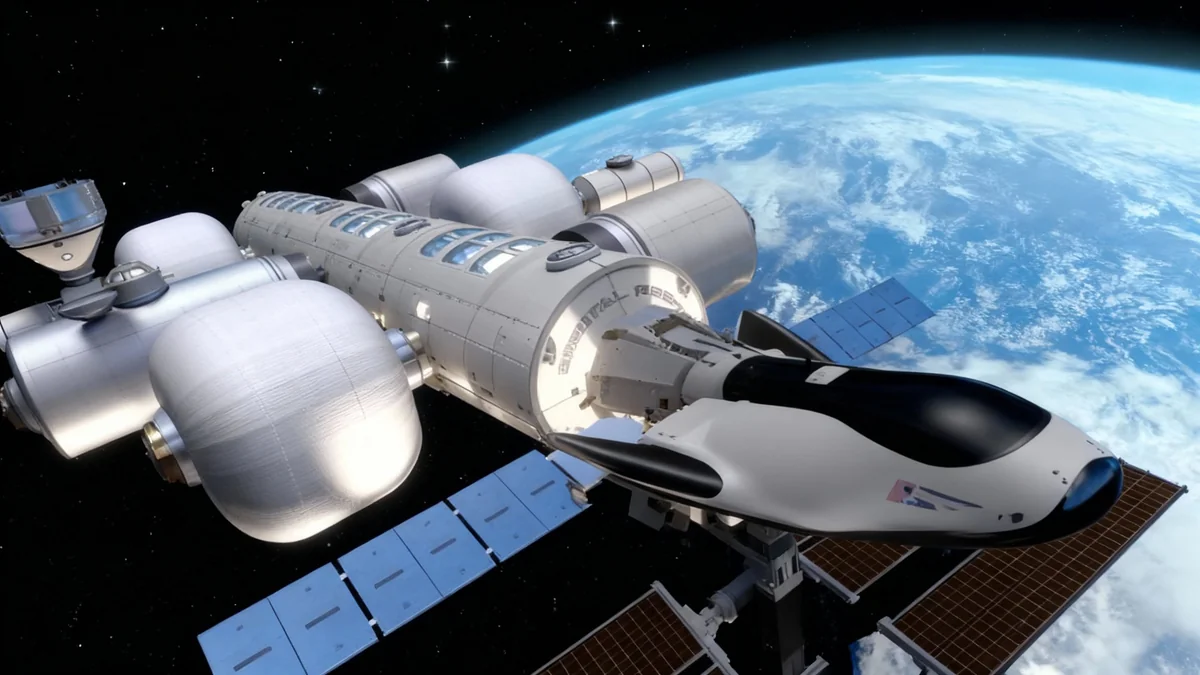The U.S. Space Force has officially launched a new financial mechanism designed to streamline the procurement of commercial space services for military use. Established on October 1, the Enterprise Space Activity Group (ESAG) is a working capital fund projected to manage over $1.2 billion in transactions annually, signaling a significant shift in how the Department of Defense integrates private sector capabilities.
The fund, which operates under the Air Force Working Capital Fund, was initiated with a $120 million deposit. Its primary goal is to provide a more agile and responsive way for military and government agencies to purchase services such as commercial satellite communications, a critical component of modern defense operations.
Key Takeaways
- The U.S. Space Force has established the Enterprise Space Activity Group (ESAG), a new working capital fund.
- The fund is projected to handle over $1.2 billion annually to facilitate the purchase of commercial space services.
- It operates as a self-sustaining, revolving fund, aiming to simplify procurement for military agencies.
- The Commercial Satellite Communications Office (CSCO) will be the first organization to utilize the new financial tool.
- This move transfers control of major satellite communication contracts from the Defense Information Systems Agency (DISA) to the Space Force.
A New Financial Model for Space Operations
The Space Force has introduced a working capital fund to change how it buys services from the commercial space industry. This model, known as the Enterprise Space Activity Group (ESAG), functions like an internal business within the military, using a self-sustaining pool of money rather than relying solely on annual congressional appropriations.
This structure is designed for efficiency and long-term stability. Military customers will pay fees for the services they use, and these revenues will be reinvested back into the fund. According to the Space Systems Command, this allows the fund to operate on a “break-even” basis over the long term.
What is a Working Capital Fund?
A Working Capital Fund (WCF) is a financial tool used by U.S. defense organizations to manage the costs of providing routine goods and services. It operates like a revolving fund, where customer payments replenish the money spent. This system avoids the delays associated with traditional annual funding cycles, allowing for more responsive and business-like operations.
This financial independence is expected to make the procurement process more predictable and adaptable. The Space Force described the ESAG as an “adaptable and scalable financial platform” created to meet the growing demand for commercial space capabilities across the armed forces.
“The establishment of a Working Capital Fund for the U.S. Space Force represents an important milestone in integrating commercial capabilities into the architecture,” stated Col. Timothy Trimailo, head of the Commercial Space Office at Space Systems Command.
Streamlining Satellite Communications Procurement
The first and primary user of this new fund is the Commercial Satellite Communications Office (CSCO). This office is responsible for managing contracts for commercial satellite services for the entire Department of Defense, as well as other government agencies and allied nations.
Previously, the CSCO relied on a working capital fund managed by the Defense Information Systems Agency (DISA). When CSCO was integrated into the Space Force in 2019, it became the sole authority for these procurements, but the financial mechanism remained with DISA. The creation of ESAG now aligns the financial and operational control under the Space Force.
Significant Financial Oversight
The Commercial Satellite Communications Office (CSCO) is responsible for overseeing a substantial portfolio of contracts, with a total value of nearly $7 billion in satellite communications services.
This transition is a multi-year effort that required congressional approval for the initial funding, which was secured in the 2025 spending bill. With the fund now active, several large satellite communications contracts will be moved from DISA's management to the new Space Force-controlled ESAG.
Benefits for Military Users
The new fund is expected to provide tangible benefits for military units that depend on commercial satellite services. One of the key advantages is improved planning and budgeting.
“The fund allows enough lead time to budget for anticipated demand,” said Clare Hopper, director of the CSCO. This foresight is crucial for ensuring that communications capabilities are available when and where they are needed without lengthy procurement delays.
By simplifying the purchasing process, the Space Force aims to become a more effective customer for the commercial space industry. This streamlined approach allows the military to leverage private sector innovation more rapidly, ensuring that warfighters have access to the latest technology.
Hopper also noted the potential for future growth, stating, “We’re looking forward to offering even more capabilities that our warfighters need.” This indicates that the fund is not just a financial restructuring but a strategic tool to enhance military readiness and technological superiority.
Strategic Shift Towards Commercial Integration
The creation of the ESAG reflects a broader strategic shift within the Department of Defense to more deeply integrate commercial space technology into its core architecture. As the private space industry continues to innovate at a rapid pace, the military is positioning itself to take full advantage of these advancements.
Key Aspects of the New Fund:
- Self-Sustaining Model: Customer payments cover the costs, creating a revolving fund.
- Financial Scalability: Designed to handle over $1.2 billion annually and grow with demand.
- Centralized Control: Consolidates financial management of commercial satcom under the Space Force.
- Increased Agility: Reduces reliance on annual funding cycles, allowing for faster procurement.
The fund's design also includes mechanisms for cost management. The Space Systems Command explained that any profits generated could lead to lower rates for customers in the future, while losses might necessitate rate increases or a request for additional capital to maintain the fund's stability.
This new financial framework is a foundational step for the Space Force. It provides the necessary infrastructure to support a future where commercial services are not just an addition but an integral part of the national security space enterprise. The successful implementation of the ESAG will likely serve as a model for other areas of commercial service procurement within the military.





